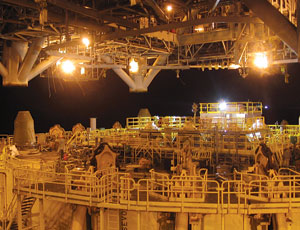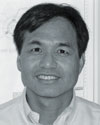As onshore oil yields decline and near-shore fields are tapped out, oil development is pushing into ever-deeper waters. The engineering challenges of deepwater production demand innovative thinking and vastly increase the risks of opening new fields.

The oil industry saw development of the deepwater Lower Tertiary trend 200 miles south of Freeport, Texas, containing an estimated 3 billion to 15 billion barrels of oil as a daunting enterprise. But G.T. Ju, a subsea engineer with Shell, is overseeing finishing touches on the Perdido development, a multibillion-dollar engineering, construction and installation project that will produce and deliver oil and gas from 34 wells. It will eventually produce 130,000 barrels of oil per day, and is expected to be the first to commercially exploit the basin. It is being developed by Netherlands-based Royal Dutch Shell plc, Richmond, Calif.-based Chevron U.S.A. and U.K.-based BP plc.
Ju developed key technologies that are being used for the first time in the Perdido’s subsea system. “G.T. has a unique combination of creativity, technical expertise and leadership,” says Dale Snyder, project manager for Shell.
The Perdido field couldn’t be developed conventionally by drilling each well and connecting them separately to a platform because the upfront cost would have been enormous. “We might lose our shirt if we make that investment” and the field did not produce, Ju says.
Ju conceived a plan to pipe the low-pressure oil from the wells to five common lift stations, where the oil would be separated, and then pumped to the surface of a spar platform using 1,500-horsepower pumps. The platform could be smaller because it only would have five risers from those regional stations connecting to the topside. The spar would also hold a drilling rig that could drill and service the wells below, another industry first. The design resulted in a smaller, more economical spar and allowed gradual development of fields.

Subsea engineer’s design makes deepwater development work through seabed separation of oil and gas, limiting the number of risers to the surface.
Ju has successfully met personal challenges as well. He came from Taiwan in 1985 without knowing a word of English. He was recently promoted to engineering manager for subsea equipment in North America and South America for Shell. “I am very pleased with the outcome,” Ju says. “I don’t think too many people get to be involved in such a project from beginning to end.”
FMC Technologies Inc., Houston, supplied the subsea equipment for Perdido, and Russ Medeiros, FMC’s project manager, credits Ju with more than technical prowess. “G.T.’s collaborative team-building skills enabled both companies to freely exchange ideas and issues in a public forum without fear of retribution,” he says. “Through his sage guidance, thoughtful mentorship and strength of character, Perdido was successfully and safely executed and should serve as a model for all projects.”



